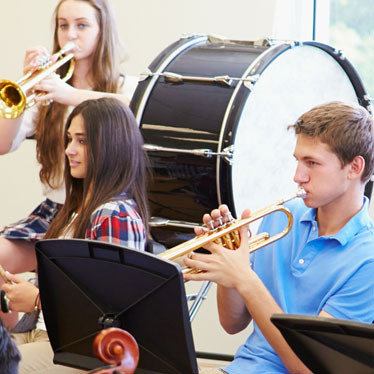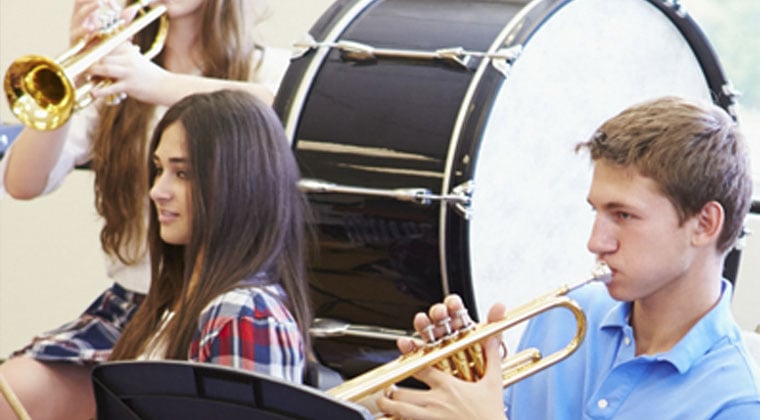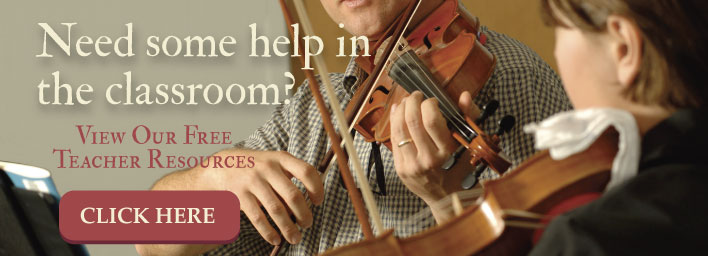
 Music is a wonderful part of our lives. It lifts our spirits and speaks to our souls in a way that nothing else has the power to do. And although it takes determination and dedication, anyone can learn to play, write, and read music. However, when introducing students to music, there are a number of foundational concepts involved, and it’s helpful if learners understand these basics right from the start.
Music is a wonderful part of our lives. It lifts our spirits and speaks to our souls in a way that nothing else has the power to do. And although it takes determination and dedication, anyone can learn to play, write, and read music. However, when introducing students to music, there are a number of foundational concepts involved, and it’s helpful if learners understand these basics right from the start.
This series of blogs will offer a variety of teaching ideas that you can use in a classroom setting or for conducting private lessons, focusing on the various elements involved in music. Whether you use the methods exactly as they’re described, or you enhance them by developing your own personal variations, these plans can help supplement your own lessons.
First we’ll examine melody, the most basic element of music other than rhythm. Other pitch and timing elements will be included in future installments.
Conveying the Basic Concept and Definition
The applications used to teach music students how to recognize melody vary with the age group. Older students may not be too responsive to worksheets that sport ducklings or cartoon train engines to indicate melody.
Basically, you just need to emphasize that each musical note represents a specific sound, which has an exact pitch and is held for a specific time period; and the melodic line is usually (but not always) the highest pitched line.
Explain to students that melody is the most easily recognizable portion of a piece of music. It is the tune you hear and remember. For example, if you’ve ever had an earwig, that annoying repetition that you can’t get out of your head is the melody. Recognizing the melody, and its various aspects, in a piece of music is a relatively simple process, and these ideas can be adapted for practically any age group.
Contour
Purpose: Have students recognize the melodic line and describe its shape verbally and visually.
Materials: You’ll need a few different pieces of music for your age group, their accompanying sheet music, and a way to play the music audibly (a CD or an instrument).
Procedure: For young students, explain that the melody is a musical line that gets the most attention when you hear it. Play a simple tune and have the students identify the melody. You can also have them draw the shape of the melody on a piece of paper. For example, “Row, row, row, you’re boat,” should produce a steady horizontal line that goes up at the end. Then show the students the actual notation to see how close their “shapes” were compared to it. With older students, you may want to introduce the concepts of conjunct and disjunct motion, as well as melodic phrases and other lines that can be drawn by a visual representation.
Phrases in Songs and Instrumental Music
Purpose: Develop the student’s ability to recognize the natural phrases used in melodies, and apply that ability to singing or playing an instrument.
Materials: For young students, either play or have recordings of simple songs (like, “Happy Birthday,” or “The Farmer in the Dale”) that demonstrate clear melodic phrases. You may want to incorporate examples of antecedent/consequent style phrases for older age groups. And, although these exercises are primarily auditory, copies of the sheet music will provide a visual reinforcement.
Procedure: Musical phrases and motifs help define the melody by creating natural pauses and repetitions, much like the way we speak and write. Subordinate clauses, prepositional phrases, etc. in sentences combine to generate specific thoughts and notions; likewise, notes are grouped together to convey an idea. Explain that it’s easy to spot the musical phrases in a song that has lyrics because they often follow along with the word phrases, but have older students listen for the natural pauses and identify them. Some discussion prompts include:
- Do the phrases seem approximately the same length, or do they vary?
- Are any phrases repeated in the exact same way? And, why is that? What type of impression does it create?
- What can you discover about how each phrase ends? Do some seem more definite than others? Why?
You can further develop this idea by comparing and contrasting verbal phrases with their musical ones. Marching band tunes, musical production pieces, and swing-era jazz examples are relatively easy to examine in this way.
Recognizing the melody is one of the first steps in learning music. You can enhance your students’ comprehension by employing listening and discussion techniques that utilize melodic terms and emphasize the different elements included in melody.

